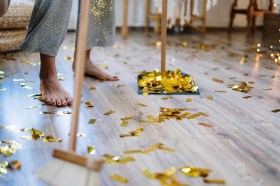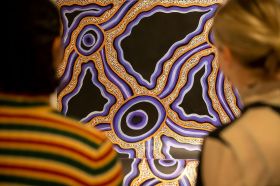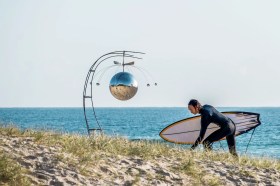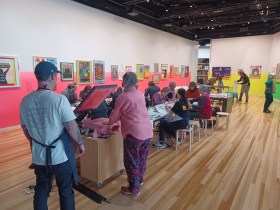I’d like to start by quoting Koorie woman, descendent of the Bundjalung nation born on Dharug country and based in Naarm Melbourne, poet Evelyn Araluen, who won this year’s Stella Award. In her acceptance speech, she said: ‘Our arts sector is punching well above its weight for mutual aid, advocacy for human rights and the environment, and as a voice for fundamental human dignity.’
Art is the most powerful thing we know.
Artists ignite our minds and charge our bodies. Art moves us. It transforms us. It transports us. It makes us dance, it makes us sing, it makes us cry, it makes us laugh and it makes us human.
Creative practice generates new technologies, new modes of working, new ways of thinking.
And when we come together to see a show or make something, we draw on thousands of years of cultural practice to learn more about ourselves and one another. It’s quite amazing.
That’s why championing Australia’s artists, bolstering our organisations and strengthening the sector is vital to Australia’s future.
Across the pandemic years, arts and cultural communities have kept coming together to work out how to keep centring First Nations voices, how to keep making and sharing work, and how to retain the increased accessibility that the pandemic pivots made possible in so many contexts.
As well as having horrendous health impacts, the pandemic is for many Australians the most significant cultural disruption of our lives. And that demands a cultural response: a confident arts and cultural policy response. Because there’s so much more at stake than just getting us past covid.
None of us can live without music, literature, film, craft, design, games, dance, theatre, visual art – plus all those artforms we haven’t heard of yet, because artists haven’t invented them yet.
Art and culture are intrinsic to our everyday lives. But let’s not confuse ‘everywhere and essential’ with ‘relaxed and comfortable’.
The arts and entertainment sector contributes some $15 billion in value added to GDP and employs around 200,000 people – as part of the $113 billion cultural and creative economy that employs more than 870,000 people or a whopping 8.1% of the total Australian workforce.
Now, focusing just on artists for a moment: what kinds of jobs are these? And in what quality of working conditions?
Despite growth and diversification in the industry, artists’ average incomes have stagnated decade after decade, remaining at or well below the poverty line since comprehensive research began in the 1980s.
Making arts jobs sustainable
Despite working longer hours and harder than ever before, more and more artists are living precariously. It’s taking more years for artists to become established practitioners, and the gender pay gap is worse in the arts than in any other industry.
These aren’t the conditions that demonstrate a profound national respect for the most courageous, creative people among us.
While the work of artists has rescued our spirits during lockdowns, so much of this work on tv and streaming services hasn’t been Australian. Now, I love shows and music from overseas, but what I love even more are the policies their governments enacted to make sure they became net exporters of creative work. Where’s our ambition?
In Australia, what we’ve seen instead is a collapse of local content quotas that make it so much harder for us to see Australian shows, and massive subsidies for foreign film productions that dwarf investment in our own stories.
While our festivals, theatres, museums, galleries and venues were the first hit by the pandemic and are still recovering, we’re still seeing devastating cancellations with huge impacts on regional communities and local economies, as well as individual livelihoods.
And while we’ve seen the RISE fund make large one-off grants to commercial entities and arts organisations, these scarce funds are public money that’s been taken away from that strategic national approach to developing the entire sector that only the Australia Council can deliver for all Australians.
Doubling or indeed tripling the Australia Council’s budget is going to be crucial – but that barely begins to approach the kind of energy the Australian Government needs to devote to the people who inspire us the most.
How do we empower all artists and strengthen the sector?
A national insurance scheme would helpfully offset pandemic disruption, for example, galvanising the resolve of everyone working on performances and exhibitions to go on taking the creative risks we love to see.
Responsible approaches to local content quotas for free-to-air tv as well as subscription and streaming services, would be a great start.
As would ambitious approaches to arts education, from early childhood through to tertiary education and research.
But let’s not look at such initiatives piecemeal. Individually, they’re great ideas, but standing all alone, they’re liable to come and go as expediently as a political announcement.
We fund arts and culture as a nation because art is a public good. Because we wouldn’t know our own humanity without it.
Rather than a stop-start politicised approach to arts money, we need a long-term policy approach to arts and culture.
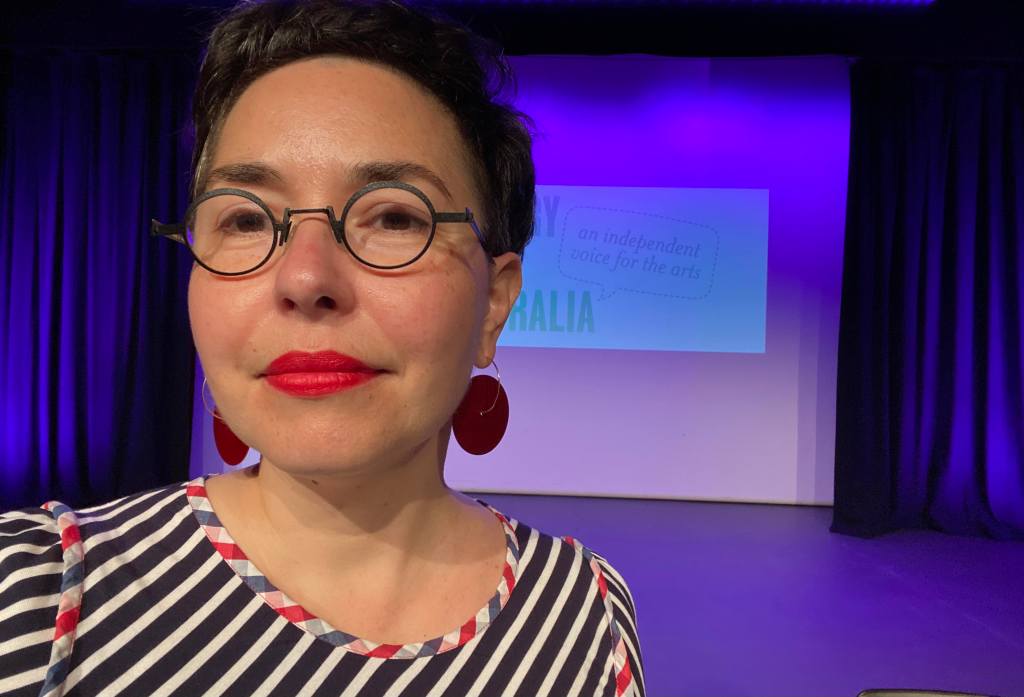
One that puts the cultural leadership and the voices of First Peoples first, and invests in initiatives that are First Nations-controlled and led. One that rises to the promise of the Uluru Statement.
One that starts with education at all levels, and makes deep connections across regional, suburban and urban development, tourism, broadcast media, intellectual property, health and mental health. One that’s as diverse as Australia’s many cultures, and as accessible as every one of us need it to be.
And one that overcomes precarious working conditions, incomes and entitlements by championing fair, equitable national best practice, including fully-funded fellowships and other opportunities to make sure artists can just make art.
Arts lovers across Australia have been vocal in their support for an ambitious, sustained federal approach. The 2016 parliamentary inquiry broke the Australian record for numbers of submissions. The recommendations of the most recent inquiry add to that work.
The guidance is there. The time to act is now.
So what are we looking for in the platforms and promises of every candidate for election?
We’re looking for ideas that ignite the mind and invigorate the nation.
We’re looking for policy thinking that’s strategic, not one-off. Strengthening the arts and cultural sector is a complex undertaking – one that’s at the very heart of what it means to live an optimistic and healthy life in Australia today.
Ending the culture wars
This means we’re also looking for elected representatives with the confidence to jettison Australia’s silly, silly culture wars. What’s with the petty ridicule? If art confuses you, you can talk to someone about it. After all, asking questions is what art is for. There’s no need to approach artists with resentment.
There’s no need to approach anyone with disrespect. In marginal seats like Boothby and Kooyong, people are paying very careful attention to the character and the values of people seeking election. And Australians are very, very interested in integrity and truth.
So, to each candidate: what we’re all looking for in the coming weeks towards the election – in the coming years if you’re elected – and then, every day for the rest of your lives – what we’re looking for is your firm commitment to art as a fundamental voice for human dignity.
Tell us how your election will make Australia a more inspirational place.
And to all candidates, wherever you’re running: inspire us. Do your best. Because artists and arts workers do their best every single day to inspire all Australians.
This article is an edited transcript of the framing speech at the Federal Arts and Culture Policy Forum, presented by AICSA on 29 April 2022. A full video of the event is now available.


